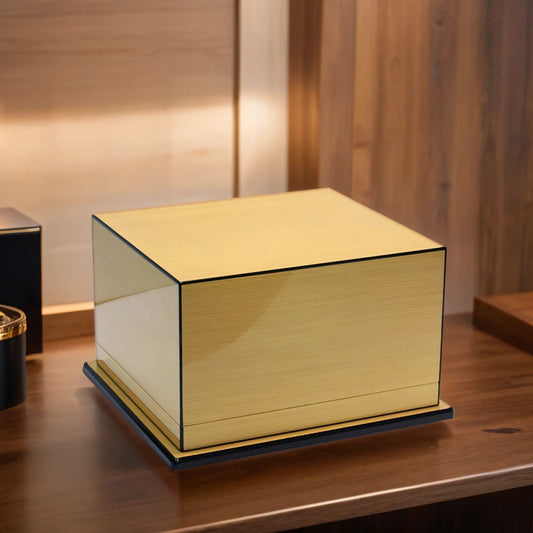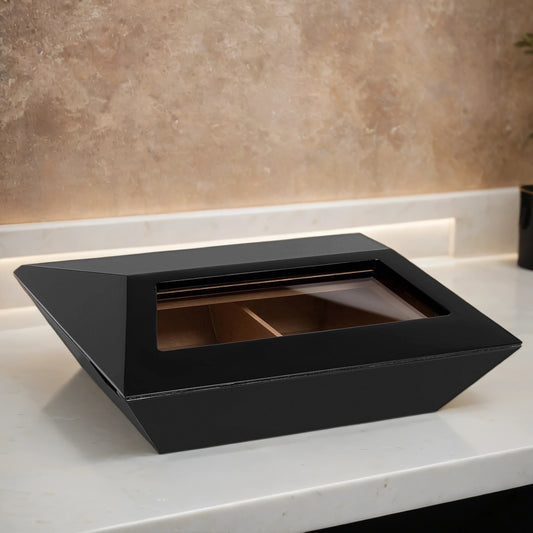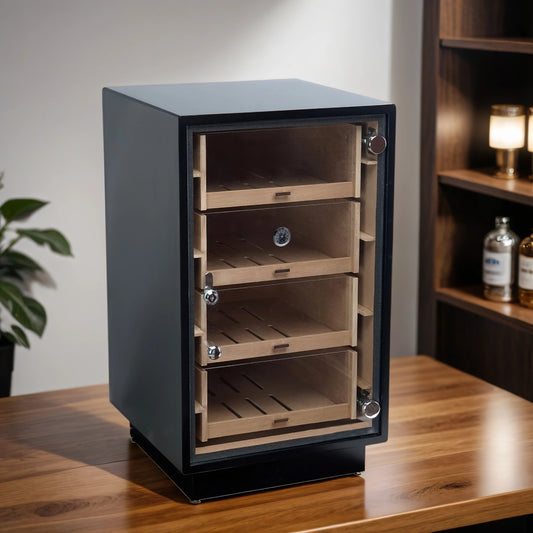
Cigar Beetles: How To Identify, Prevent, And Kill Them
Imagine opening your humidor, ready to enjoy a well-deserved cigar, only to find tiny holes in your prized collection. These aren’t just imperfections, they’re the work of tobacco beetles, also known as cigar or cigarette beetles. While I’m not usually squeamish, the thought of bugs chewing through cigars I plan to put in my mouth? Absolutely not. These cigar bugs are the ultimate saboteurs in the world of premium tobacco.
So what exactly are cigar beetles? How common are they? How can you find them, eliminate them, and make sure they never come back? Here’s everything you need to know to protect your stash.

What Are Tobacco Beetles?
Tobacco beetles, also called cigar beetles or by their scientific name Lasioderma serricorne, are small reddish-brown insects about 2 to 3 millimeters long. While they may look like harmless specs, these beetles are notorious for destroying cigars by burrowing into the tobacco.
Their lifecycle starts as eggs, which hatch into larvae that feed aggressively on the tobacco leaf. The larvae are the real culprits of the damage, eating tunnels through the filler. Once mature, they become adult beetles capable of flight, and worse, reproduction. A single female can lay up to 100 eggs, which makes a small infestation grow fast.
Cigar beetles thrive in warm, humid environments, especially if your humidor’s temperature rises above 75°F. That’s when dormant eggs can hatch and turn your humidor into ground zero.
What Do Cigar Beetles Look Like?
Cigar beetles are tiny, about the size of a sesame seed, but they’re easy to identify if you know what to look for. They have a hard shell, reddish-brown color, and a tendency to play dead when disturbed. They can sometimes be seen crawling on your cigars or inside your humidor. More often, you’ll spot their aftermath before seeing them directly.
The telltale signs include:
- Tiny, round holes in the wrapper (called cigar beetle holes)
- Fine tobacco dust or powder, known as frass, in your humidor
- Dead beetles or shells, especially in the corners of your humidor or under cigars

How to Get Rid of Cigar Beetles
If you’ve spotted cigar beetles, act fast. Here’s the proper method to eliminate them:
- Quarantine your cigars. Remove any cigars that don’t show damage and place them in sealed freezer bags.
- Freeze your cigars. Put the bags in the freezer for 72 hours. This kills all beetles, larvae, and unhatched eggs.
- Thaw slowly. Move them to the refrigerator for 24 hours, then bring them to room temperature. This prevents the wrappers from cracking due to temperature shock.
- Inspect and discard. Any cigar with visible beetle holes is compromised and should be thrown away. You don't want to smoke beetle leftovers.
- Clean your humidor. Remove everything and wipe all interior surfaces with a clean, slightly damp cloth. Allow it to air dry thoroughly before reuse.
- Replace humidification units if they were exposed. Some beetles or eggs may hide inside them.
If the infestation was severe, you might need to consider replacing your humidor altogether, especially if beetles were found in the wood.
Can You Smoke a Cigar That Had Beetles?
Short answer: no. If a cigar shows clear signs of damage, it's not just a cosmetic issue. Cigar beetle larvae chew through the filler, destroying the draw and balance of the cigar. Even if you freeze the beetles, you're still left with their remains inside the tobacco.
Smoking a beetle-infested cigar is like biting into a wormy apple, technically possible, but revolting. And once you know what's inside, you won't enjoy it anyway. Toss it.

How to Prevent Tobacco Beetles
Prevention is your best defense. These bugs don’t show up out of nowhere, they hatch when conditions are right.
- Keep your humidor below 72°F. Tobacco beetles thrive in temperatures over 75°F. Invest in a temperature-controlled humidor or store your cigars in a cooler part of your home.
- Maintain relative humidity between 65 and 70 percent. Over-humidification invites mold and pests alike.
- Use a digital hygrometer. Analog gauges are often inaccurate. A good digital hygrometer gives you more control.
- Inspect new cigars before adding them to your collection. Even reputable shops can unknowingly carry cigars with dormant beetle eggs.
- Quarantine new cigars in a separate humidor for two to three weeks before introducing them to your main stash.
Freezing new cigars as a preventive step is debated, but many enthusiasts opt to do so, especially if they’ve purchased from warm climates or during the summer.
Are Cigar Beetles Harmful?
To cigars? Absolutely. To humans? Not directly, but that doesn't mean it's safe. Inhaling beetle remnants or mold from affected cigars isn’t just disgusting, it can irritate your lungs or cause respiratory issues. Plus, beetle infestations can spread to other tobacco products in your home if not contained quickly.
Final Thoughts
Cigar beetles may be tiny, but the damage they cause is massive. If you love cigars, treat beetle prevention like you would any part of your humidor maintenance. Monitor your temperature and humidity, inspect your cigars, and act quickly if you ever spot the signs. Trust me, there are few things worse in this hobby than lighting up a cigar and realizing you’re smoking beetle leftovers.
Keep your humidor clean, your cigars cool, and those pests out.

FAQ
What do cigar beetles look like?
They’re small, 2 to 3 mm, reddish-brown beetles with a hard shell. If you see them crawling or dead in your humidor, you’ve got a problem.
How do I know if I have a cigar beetle infestation?
Look for perfectly round holes in your cigars, fine tobacco dust (frass), or dead beetles in the humidor.
Can cigar beetles fly?
Yes, adult tobacco beetles can fly, which allows infestations to spread quickly if not contained.
Are cigar beetles common?
They’re not rare, especially in warm climates or when cigars are stored improperly. Even premium cigars can carry dormant beetle eggs.
What temperature kills cigar beetles?
Freezing cigars at 0°F for at least 72 hours will kill beetles, larvae, and eggs.
Can cigar beetles live in the humidor wood?
While they prefer tobacco, beetles and their eggs can sometimes hide in the crevices of your humidor or humidification device.












